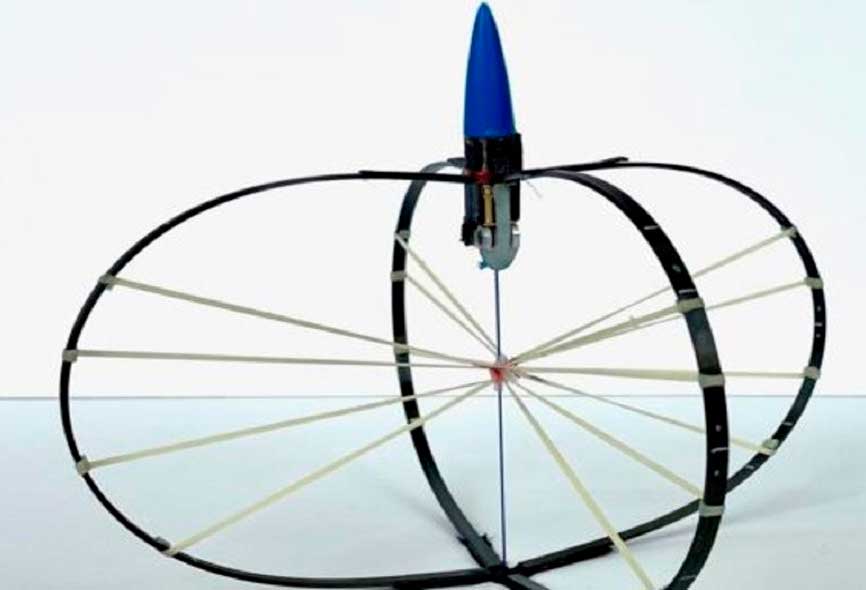Fleas are considered to be among the best jumpers in nature. With a body length of only two or three millimeters, they can jump a good half meter - about two hundred times their body length. It is the first time a robot has come close to this enormous leaping ability. For decades, scientists have been developing robots that mimic or are inspired by jumping techniques found in nature. In animals, the maximum jump height is limited by the force that muscles can generate when pushing off. On the other hand, the jump height of the robot can be increased by using a rotary motor that stores energy.
U.S. researchers have developed a small prototype that weighs less than 14 grams and has a small motor combined with a drive spring. It consists of 2 carbon fiber arcs that are bent with rubber bands. These bands are, in turn, connected to a motorized spindle.
The device, 30 centimeters high, can jump steeply and then straighten out again. It can be helpful in space as well.
A team of engineers at the University of California, Santa Barbara, has designed a robot that catapults more than 30 meters. It is more than 100 times its size. Thus, according to the study's authors, the robot is superior to other known jumping robots. Besides its ability to jump, what is unique about the robot is that it can stand up on its own after landing and then continue jumping.
The robot consists of a motor that pulls on a rope to tension a spring. In addition, four arches are connected to the motor housing at the top and each other at the bottom. They serve as additional springs. When the string loosens, the spring and outer arc springs also reduce, and the robot flies upward. When the robot lands again, the motor pulls the cord again to create tension, and the arcs bend again. The result: The robot stands up on its own again.
It clearly distinguishes the California robot from other jumping robots. Until now, researchers have mainly mimicked animal movements with similar jumping machines. However, living creatures are limited by the performance of their muscles at the height of the jump. In contrast, artificial sources can store and release much more energy.
The jumping robot, which weighs only 30 grams, accelerates like an arrow in nine microseconds to a speed of 28 meters per second. It reaches a maximum height of nearly 33 meters. Once on the ground, the bows could be re-tensioned by an electric motor for the next jump. The robot converted a good 1000 joules of specific energy per kilogram during the jumps. For comparison, the most efficient jumpers in nature reach specific energy of no more than 170 joules per kilogram.
Such jumping robots could, in the future, be used in cross-country expeditions or even in lunar missions. Also, robots can more easily overcome obstacles and even photograph the ground beneath them, which was previously only possible with flying drones. This principle could also be helpful in space travel. According to the researchers' calculations, with the correspondingly lower gravity, the robot should achieve even better results on the Moon: it can reach heights of up to 125 meters, with the product advancing half a kilometer.




